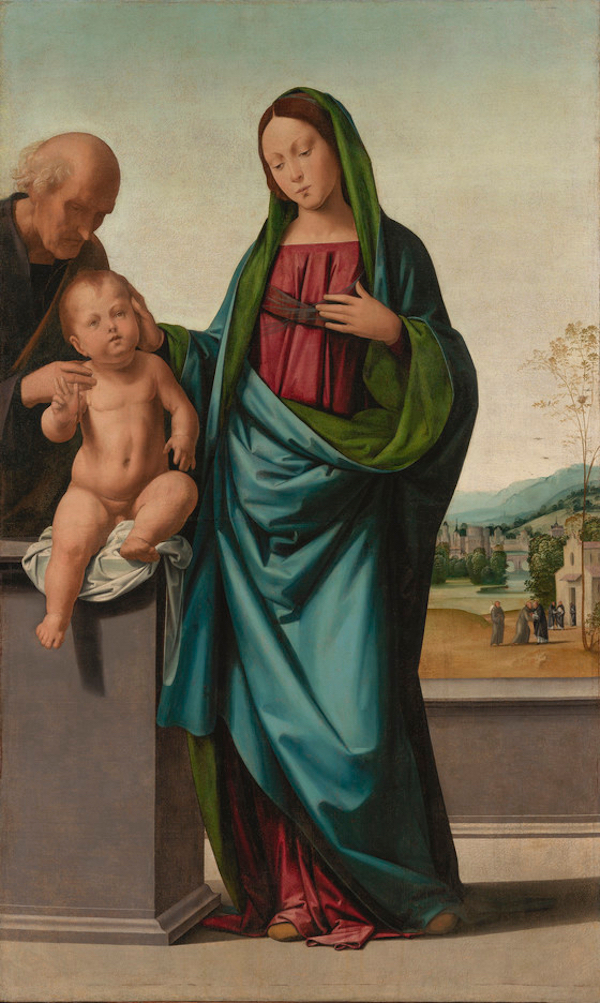As LACMA prepares for the 2026 public opening of the new David Geffen Galleries, the future home of the museum’s permanent collection spanning a breadth of eras and cultures, we’re sharing 50 iconic artworks that will be on view in the building over the next 50 weeks in the series 50 Works 50 Weeks.
Fra’ Bartolomeo’s Holy Family (1497) depicts the Virgin Mary and Saint Joseph attending to the tranquil Christ Child. Mary, a central and commanding figure, assumes a statuesque posture, framed by simple architectural elements—a plinth behind her and a pedestal supporting the Child. The painting’s vertical format deviates from the typical square-shaped Florentine altarpieces commonly painted before 1500. This departure, along with its medium of canvas as opposed to wood panel, suggests that the painting might have been intended for a specific religious event, such as a processional banner, or for hanging on columns inside churches.

Recent conservation treatments conducted prior to the opening of the new David Geffen Galleries have restored much of the painting's vibrant coloring. Mary’s delicately painted face shines against the backdrop of an expansive blue sky and a convent nestled below mountains. In the background, the figures of Saints Francis and Dominic embracing before the convent allude to a well-known dream of Dominic, in which the Madonna foretells that these two friars will lead the fight against the vices of pride, avarice, and lust—a theme that Bartolomeo revisited throughout his career.
This goal of stripping down excess ultimately took the form of extremism in Florence, particularly during the tenure of the Dominican reformist Girolamo Savonarola (1452-98). Secular books, music, instruments, and art were burned in the Florentine piazza in the first bonfire of the vanities in 1497, and around that time Bartolomeo even destroyed some of his own paintings as a result of his alliance with Savonarola's teachings. When Savonarola’s power over Florence became unmanageable, the Papal Church and civil authorities ordered the preacher’s public execution in 1498. The somber tone and dignified demeanor of Bartolomeo’s Holy Family, created around the same time, sheds light on the turbulent period of Florence.



